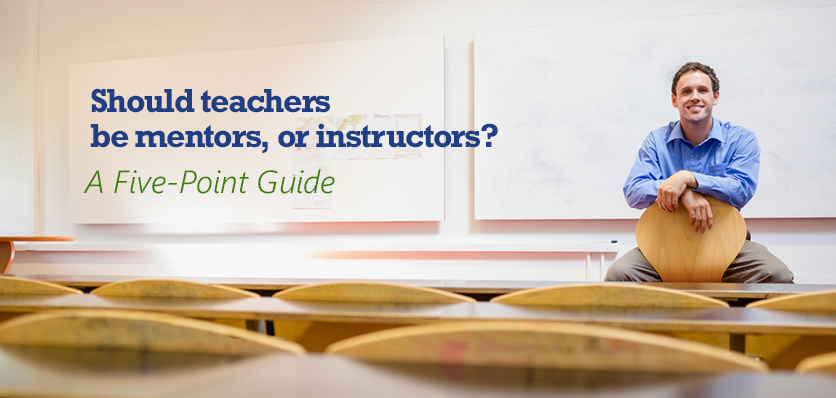
While this question has been around as long as learning itself, it’s recently received fresh focus: digital technologies now enable both to be delivered in new ways.
So – in this new world – which should you be? And how? Here’s our five-point guide …
Step 1: Understand the difference
This is key. Some people define instruction as ‘telling or imparting’ information, and mentoring as listening and encouraging. To an extent that’s true, but it’s also rather simplistic.
A more sophisticated definition is this: a teacher has greater knowledge than their students, a mentor has greater perspective. Once you see the two roles like this, it should become clearer what each needs to achieve.
Step 2: Choose which you want to be…
… then stop. Think again. Do you really want to be one or the other? Wouldn’t it be better to be both?
The best teachers offer students both instruction and mentoring. Indeed, the true power of digital learning is that it can help with both too. The following steps say how, then our final step covers combining the two…
Step 3: Use digital techniques for instruction
We’ve covered this topic in previous blogs. Check out How to create a flipped classroom, and How to design a blended learning environment for some ideas.
This time therefore, we focus more on mentoring…
Step 4: Use digital techniques for mentoring
Mentoring covers a range of techniques. A simple web search provides plenty of suggestions – role-playing, positive reinforcement, coaching, counseling and so on. Be aware though these are often pitched at business or professional contexts. For an educational setting, it need not be so formal. For example:
The heart of all these is being available, and listening. Digital technology enables these to happen in numerous ways, times and places. You no longer need to be physically in the same room as your students, or constrained by regular school hours.
Skype, BBM, email and other methods are all invaluable for this. With your students’ consent, follow them on social media channels. You can then spot moments when interaction might help, even if it’s as small and simple as tweeting a motivational message, liking their Facebook post, or sharing content they might appreciate, such as a YouTube video.
Decide how available you want to be to them in return. If you want students to be able to email or BBM you personally outside school hours, for example, you need to consider whether this has parameters or not. And if it does, what these are.
Step 5: Merge the two in a structured way
Your most important decision is determining the balance you offer students. When and how will they be instructed; when and how will they be mentored?
One way to gauge this is to treat the entire e-learning process as four phases, based on common best practice. The amount of mentoring and instructing varies in each.
Phase one is active induction. Here, you are mostly instructing your student as they access digital resources. Next comes guided exploration. Here your role starts to include more ‘mentoring’, as you help a student extend their e-learning. Third comes facilitated induction. By now, you are coaching the student, as they adopt their own methods. Finally, they become a fully self-organized learner: at which point you are facilitating their learning and mentoring them in a wider sense.